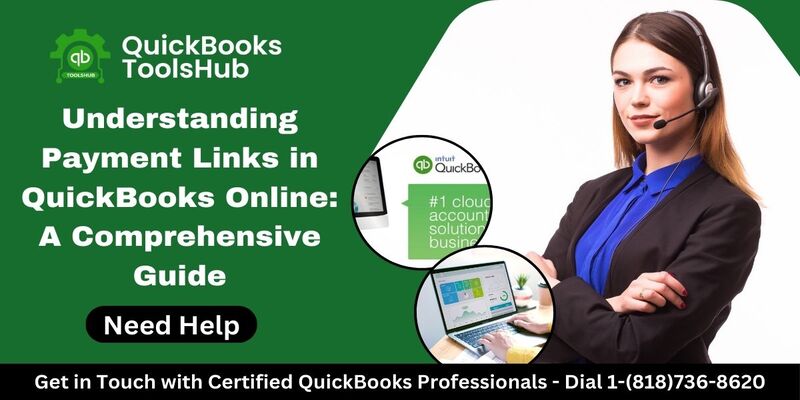Understanding Payment Links in QuickBooks Online: A Comprehensive Guide
In QuickBooks Online, payment links are a convenient feature that enables businesses to accept payments from customers securely and efficiently. These links provide a seamless way for customers to pay invoices or make purchases online, simplifying the payment process for both parties. In this comprehensive guide, we’ll explore the true nature of payment links in QuickBooks Online, their benefits, how to generate them, and best practices for using them effectively.
What are Payment Links in QuickBooks Online?
Payment links in QuickBooks Online are unique URLs generated by the software that allow customers to make payments electronically. These links are associated with specific invoices or sales transactions, providing a direct pathway for customers to submit payments online using their preferred payment method. Payment links eliminate the need for manual processing of payments, streamlining the collection process and reducing administrative overhead for businesses.
True Statements About Payment Links in QuickBooks Online
- Convenience for Customers: Payment links offer unparalleled convenience for customers, allowing them to pay invoices or make purchases online with just a few clicks. Customers can access payment links from any device with an internet connection, making it easy to submit payments from anywhere, at any time.
- Enhanced Cash Flow: By providing customers with the option to pay invoices instantly using payment links, businesses can accelerate their cash flow and improve liquidity. Customers can settle their outstanding balances promptly, reducing the need for follow-up and collection efforts.
- Security and Compliance: Payment links generated by QuickBooks Online adhere to stringent security standards to protect sensitive payment information. Transactions conducted through payment links are encrypted and processed securely, ensuring that customer data remains protected from unauthorized access or fraud.
- Customization Options: QuickBooks Online offers customizable payment links that businesses can tailor to their branding and preferences. Users can personalize payment links with their company logo, colors, and messaging, creating a cohesive and professional payment experience for customers.
- Automated Payment Reminders: QuickBooks Online can automatically send payment reminders to customers with outstanding invoices, including payment links for easy submission. This automated process helps businesses stay on top of collections and encourages timely payments from customers.
- Integration with Payment Gateways: Payment links in QuickBooks Online seamlessly integrate with popular payment gateways and processors, allowing businesses to accept a wide range of payment methods, including credit cards, debit cards, bank transfers, and digital wallets. This versatility ensures that customers can choose the payment method that suits them best.
- Real-Time Payment Tracking: Businesses can track the status of payments submitted through payment links in real-time, providing visibility into the payment process and enabling proactive follow-up if necessary. QuickBooks Online updates payment statuses automatically, allowing users to monitor incoming payments with ease.
How to Generate Payment Links in QuickBooks Online
Generating payment links in QuickBooks Online is a straightforward process:
- Create or Open Invoice: Start by creating a new invoice or opening an existing one in QuickBooks Online.
- Click on Payment Options: Navigate to the payment options section of the invoice and select “Send invoice.”
- Choose Payment Link Option: Choose the option to include a payment link in the invoice email. QuickBooks Online will generate a unique payment link associated with the invoice.
- Send Invoice: Complete the invoice details and send it to the customer via email. The email will include the payment link, allowing the customer to submit payment electronically.
Best Practices for Using Payment Links in QuickBooks Online
To maximize the effectiveness of payment links in QuickBooks Online, consider the following best practices:
- Include Clear Instructions: When sending invoices with payment links, provide clear instructions to customers on how to submit payments using the link. Include information on accepted payment methods, payment deadlines, and any other relevant details.
- Follow Up Appropriately: Monitor the status of invoices and payments submitted through payment links regularly. Follow up with customers who have outstanding balances or overdue invoices to encourage prompt payment.
- Promote Payment Links: Promote the use of payment links among customers by highlighting the convenience and security benefits. Encourage customers to take advantage of payment links for a hassle-free payment experience.
- Stay Compliant: Ensure compliance with applicable regulations and standards governing online payments, including data security and privacy requirements. Protect customer data and payment information by adhering to best practices for data protection.
- Monitor Payment Trends: Analyze payment trends and patterns to identify opportunities for optimization and improvement. Use insights from payment data to refine your payment processes and enhance the customer experience.

